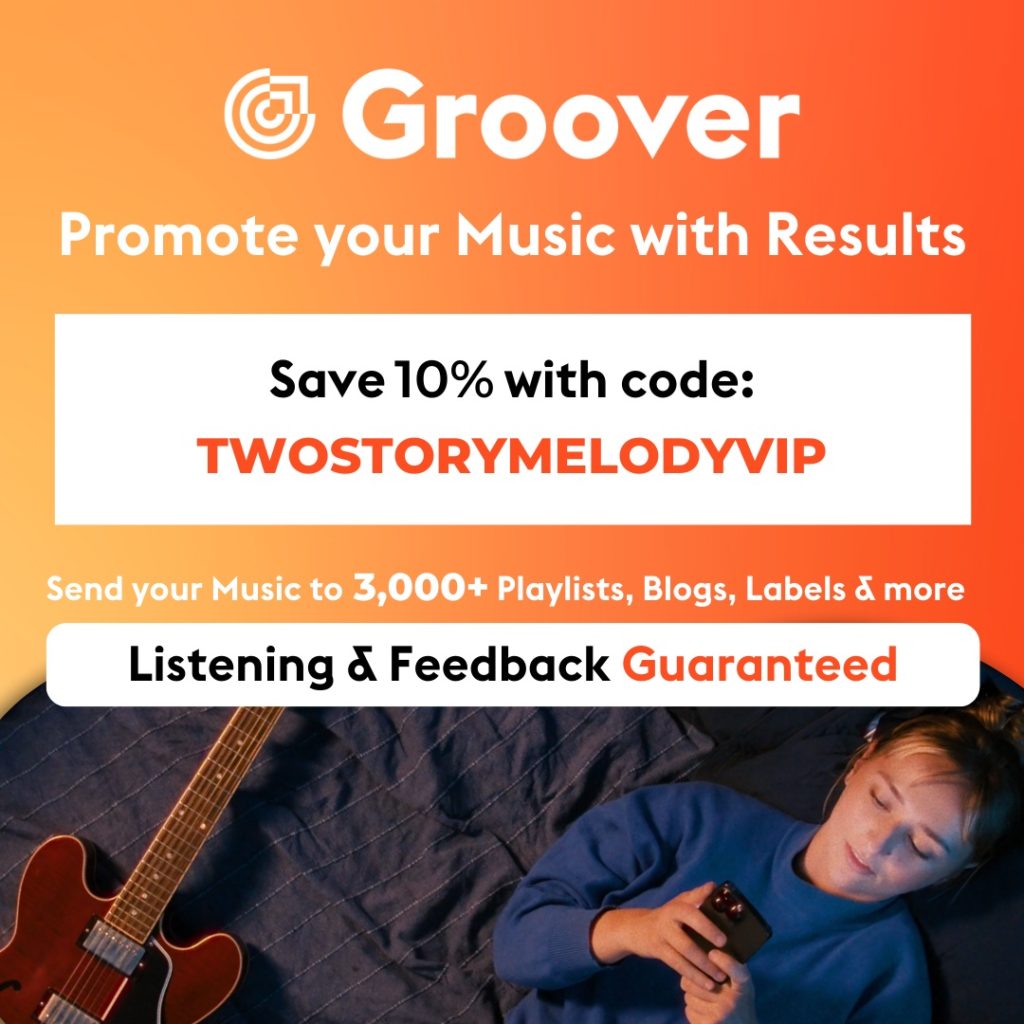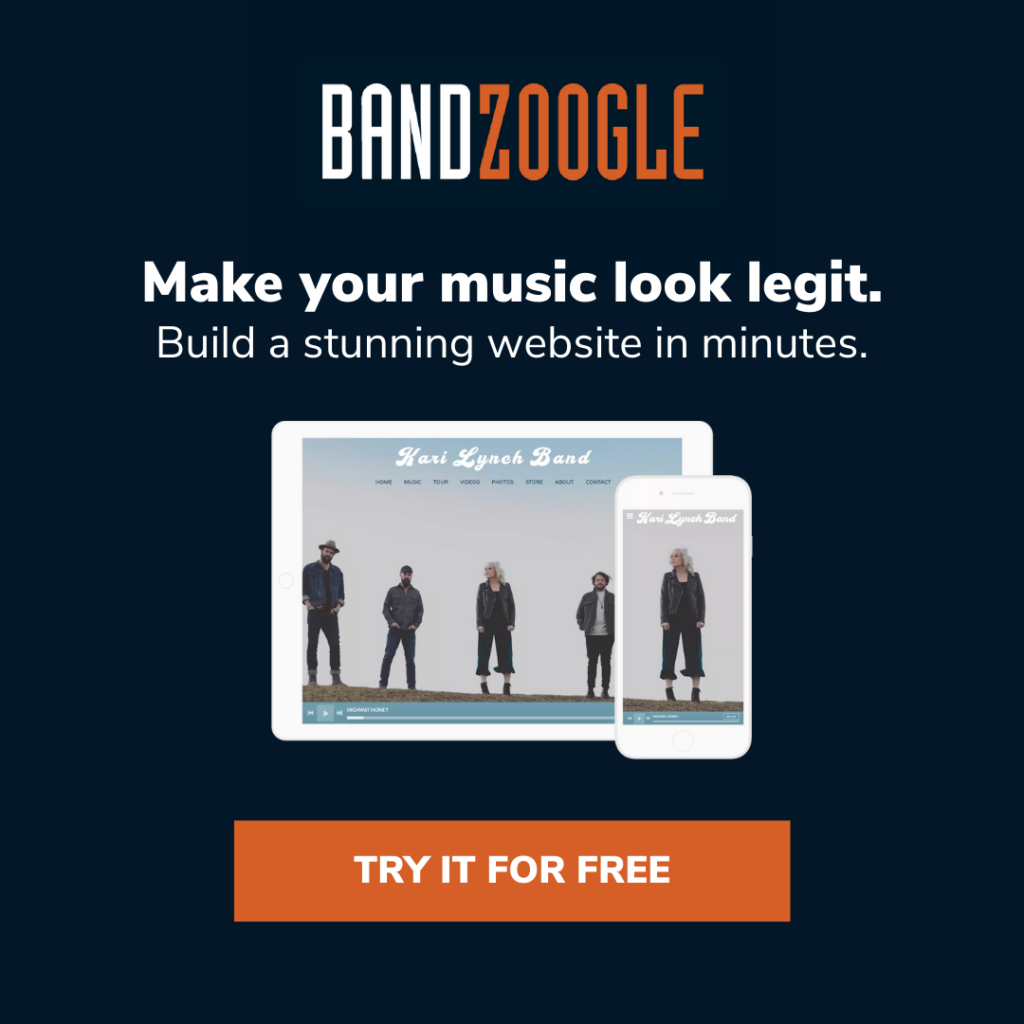You’re an indie musician. What do you put on your website?
This is something I’ve been thinking about as I’ve gotten deeper into the world of indie music PR. First, let me put a flag in the ground: I think musician’s websites matter. With all of the platforms out there today – from YouTube to Instagram to TikTok – it can feel like the entire idea of a website is outdated. You’ve got enough places to build your audience, right? So many of them are practically built already; all that’s left for you to do is sign up and create. Is it really worth it for you to put effort into creating a platform of your own?
I think the answer’s yes, and here’s why: because a platform of your own lets you build an audience of your own, and an audience of your own tends to be more engaged with your music.
If you built an audience on Facebook five years ago, they were your fans, sure, but they were really Facebook’s audience; today, you basically have to pay to get your own fans to see your posts. If you build a huge following on TikTok today, great (I think) – you’ve got fans, but they’re really TikTok’s audience. Cross your fingers that the platform won’t get sold or go under in two years.
When you build a website, though (and I think, just as importantly, an email list), the platform’s yours. And your chances of engaging with the people there are way better because those people are literally there for you – they’re not scrolling through a feed where you happen to show up.
I’m not saying social platforms aren’t a great place to tell your story as an indie artist. They absolutely can be. All I’m saying is that having your own website is absolutely worthwhile.
Okay. With that cleared up, let’s get back to the point: what’s even supposed to go on an indie artist’s website?
First, find the purpose.
Sounds deep, right? But, honestly, it’s just practical advice to have a goal before you take a shot at something. So, what’s the goal of your website?
I think it should serve two purposes:
- Connect your story to your audience. It should be a place where your fans can learn more about who you are as an artist and engage with you and your music.
- Give your music context in the industry. It should be a place where promoters, labels, booking agents, press people, etc. can find out who you are and what you’re about.
So, those are the goals. Here’s what you should include on the site to make them happen.
Your story.
Probably no surprise here, but at the most basic level, your website should communicate your story as an artist. What “your story” means exactly is probably a topic for another day – for now, let’s keep things practical. These four components will get you started, at least.
A well-written bio. I think you can get someone else to write one or write your own, but when people find your website, they’re going to want to read about you; on almost any site that lists it as an option in the main navigation, the About section is the second or third most-read page. People want to know what other people are about. That’s the basis of pretty much any relationship, including artist-fan connections.
Press coverage. People like press coverage for the same reason we like reviews of movies – we like to see what other people think about something while we’re shaping our own opinions. Including press excerpts and links will serve the dual purpose of giving your fans more context into your story and giving industry people some positive reinforcement about how great you are.
Legit photos. Good photos are the difference between looking legit and looking unlegit. It really is worth it to get professional photos that capture your aesthetic as an artist. You probably already know this, but there it is again. And good photos make a huge difference on a website.
A blog. This one’s not quite as necessary (your site could survive without it), but I think if you don’t blog you’re passing up on the potential for a great platform to connect with your fans. I’m all about the blogs of some of my favorite artists – and, in some cases, they’re my favorite artists because of their blogs.
Your music.
This is kind of a no-brainer, but yeah, you should definitely have your music on your site.
Really, your site probably won’t be the first place your fans go to listen to your stuff – once they know you, they’re going to find you on Soundcloud or Spotify or Apple Music or whatever. But your site will often be the first place that new people listen to your music, so you should make it easily accessible.
That means you should put up links to your streaming platform profiles, but also go ahead and embed that stuff so that people can hear it right there. If you want to take things as far as setting up streaming capability and hosting the tracks on your site, go for it (although nobody that I know likes when things auto-play, so maybe avoid that).
Less-important-but-still-cool: listing your lyrics. I trust artists’ versions of their lyrics more than I trust Google.
Your merch.
This is one of the most important functions of your site: selling your merch online. It used to be trickier from a technical perspective, but today there are a ton of easy platforms to sell from with minimal stress.
Fans dig merch. Your site is the place your fans will go to buy your stuff. Make sure they can find it.
Your tour dates.
Pretty simple: ideally, your fans should be able to see where you’re playing and when you’re playing, and then be able to buy tickets (either directly on the site or through quick, accessible links). If they can, nice. If not, make it happen.
Oh, and if you can help it, don’t let your tour dates get outdated. It’s confusing.
Your socials (including an email list signup).
Last but not least, your site should definitely include easy links to your social channels.
I think of artist websites as the hub of the wheel. They’re where everything gets connected. Theoretically, a person should be able to start at your website and trace out all of the spokes to find out all they could want to about you as an artist. That means easy clicks through to Twitter, Instagram, YouTube – whatever you’ve got.
It makes figuring out who you are a lot easier.
Okay, so how do you actually build the site?
We’ve covered what should be on your site, so let’s finish with a quick primer on how to actually bring all of this into existence. There are plenty of good ways to do this; I’ve built sites on WordPress, Squarespace, and Weebly, to name a few, and for the most part you can make something solid on any of these (or similar) platforms.
If you go with an open source platform (like WordPress), you’ll need to get hosting. My go-to recommendation for this is SiteGround. They’re affordable (the first year starts at $3.99 a month) and have solid customer service. Full disclosure, I’m an affiliate, so if you click this link and use them I get like $2.
But here’s my recommendation for indie artist websites: Bandzoogle.
Disclaimer – yeah, we’re affiliated with them, too. And there’s a reason for that – they make telling artists’ stories easier.
None of the other platforms is designed specifically for musicians. Using WordPress, for example, is like trying to build a LEGO Millennium Falcon using a huge, generic set of LEGOs; using Bandzoogle is like getting the Millennium Falcon kit (which would be the best decision you’d make today).
Bandzoogle is made for music sites, which makes setting up all the things I mentioned above (tour dates, merch, music, email lists) a lot easier. Plus, they’ve got phenomenal support and definitely-affordable pricing.
So, there you go.
But no matter what you choose (and no matter what you choose to put on your site), keep two things in mind.
Have a purpose for your site. Tell your story on your site.
If you work through the consequences of those things, your site will turn out fine. And yes, it’s totally worth it.







